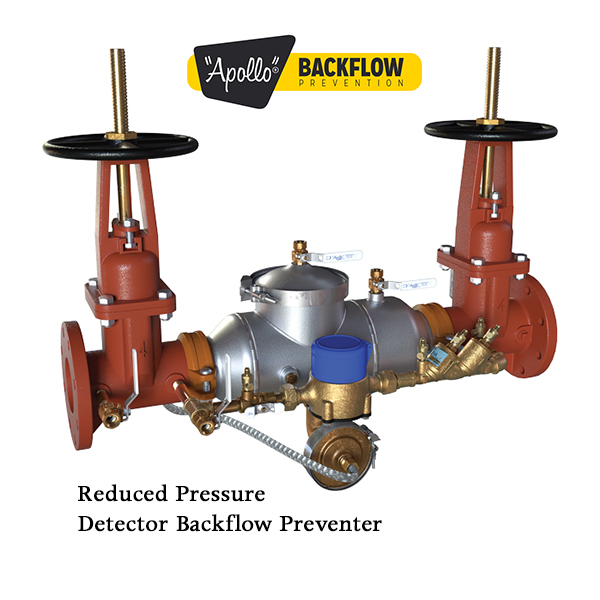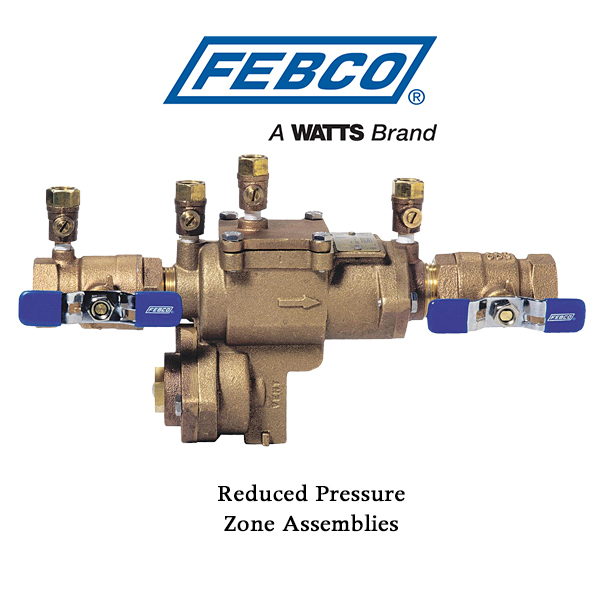Backflow is water flowing in a piping system in the opposite direction from its normal flow. In essence, the direction of flow is reversed, due to a change in pressures. The resulting backflow allows contaminants to enter drinking water piping. Backflow
prevention devices keep this from happening. To help ensure safety, they need to be periodically tested and serviced. Technicians need knowledge, hands-on training, and most state or local authorities require a license to work on this
equipment. If you are looking to increase revenues, here is what you need to get started with testing and servicing backflow prevention devices.
When drinking water piping is connected to other water utilizing equipment, a “cross-connection” is created. An example of a cross-connection is piping from the potable water system to a fire sprinkler system or a lawn irrigation system. There is a health
risk associated when water from a cross-connection flows back into the drinking water piping. This type of backflow often contains contaminants or pollution. To keep this from happening, backflow preventers are installed. When backflow
prevention assemblies are installed correctly, and annually tested and maintained, the safety of the local potable water is ensured.
Unless water comes directly from a well, drinking water is provided by a water purveyor, such as a public utility, a mutual water company a county water district, or a municipality. A backflow incident could occur if biological, chemical, or other contaminants
enter the drinking water supply (under backflow conditions) through unprotected cross-connections. A backflow incident could cause injuries, illnesses, or even death. That is why steps are taken to prevent backflows. Typically, potable
water systems are configured so that non-drinkable water cannot enter the piping system of a drinking supply.

Certain steps are taken to prevent contamination. For example, air gaps normally take care of any siphoning back into the potable water system. The simplest example is the space (air gap) between a faucet and a sink rim. That air gap prevents any contaminants
in the sink from being siphoned back into the water supply. The air gap essentially acts as a backflow preventer.
Where cross connections are needed for other water utilizing equipment, a backflow prevention assembly is normally required. Although NFPA 13, Standard for the Installations of Sprinkler Systems does not have a specific requirement for installing backflow
preventers, it does have a requirement that a means be provided downstream of all backflow prevention devices to facilitate the annual forward flow test.
Where backflow preventers are installed in water-based fire protection systems, NFPA 25 Standard for the Inspection, Testing, and Maintenance of Water-Based Fire Protection Systems (2017 Edition) requires annual testing and periodic inspection. Additionally,
the International Plumbing Code (IPC) or the Uniform Plumbing Code (UPC) both contain criterion for the mandatory installation and testing of backflow prevention devices. These codes are most often adopted as local or state plumbing codes.
Installation Requirements
Section 608 of the 2018 IPC addresses protection of potable water supply. It says that the system must be designed, installed, and maintained to prevent contamination being introduced into the potable water supply through cross-connections and other piping
connections. Section 603 of the 2018 UPC has a similar requirement that mandates the installation of a backflow prevention device (No person shall make a connection…unless there is provided a backflow prevention device…). Both codes provide
specific details regarding which type of backflow prevention device is required to be installed.
In order to determine which plumbing code your jurisdiction has adopted you will need to check locally or contact your local building and planning department.
Testing and Internal Inspections
Backflow prevention assemblies are mechanical devices installed at cross-connections to prevent backflow of contaminants into the drinking water piping. Backflow prevention assemblies get tested when they are initially installed and annually thereafter.
Section 312.10 of the IPC and section 603.2 of the UPC address the inspection and testing of backflow prevention assemblies. Both codes require annual inspections and annual testing of backflow prevention assemblies.

Backflow preventers, included in fire sprinkler systems, protect public health from contamination by preventing water from flowing back into the public water grid. These devices have a tendency to fail to close when not exercised for long periods of time.
NFPA 25, paragraph 13.7.2.1 requires the annual testing of backflow preventers by conducting a forward flow test at the designated flow rate. The forward-flow test was developed to make sure these devices work and to ensure the sprinkler
system can be served by enough water in a fire condition. Even smaller backflow preventers must be tested annually. Performing the test identifies flow performance problems with the sprinkler system but also helps ensure healthy drinking
water, since when water sits stagnant, a build-up of bacteria occurs and there is an increase in mineral content from piping.
Additionally, 13.7.1.3 requires backflow prevention assemblies to be inspected internally every 5 years to verify that all components operate correctly, move freely, and are in good condition. The internal inspection not only assures components are working
properly but also permits identification of any parts that need replacement.
Certification and Licensing
Many states require that technicians inspecting, testing, maintaining or repairing backflow prevention assemblies that protect the public water system to pass a state certification examination and, thereafter, maintain a valid certificate. Some states
require a licensed plumber to do the installation and testing, while others have special licensing for technicians performing work on cross-connections. Still other states only allow licensed sprinkler fitters to work on the backflow prevention
devices in the cross-connections to fire sprinkler systems. Some states require inspections of backflow prevention assemblies to be performed by a licensed plumber with a special cross connection control device inspector certification.
The American Society of Sanitary Engineers (ASSE) offers Cross-Connection Control Certification. There are ASSE approved schools all around the country that offer this ASSE certification. This certification in backflow prevention assembly testing, repairing,and
surveying is promoted by ASSE as a nationally recognized credential. You will need to check locally to see if their certification is accepted.
There are also regional certification schools for cross-connection technicians. The New England Water Works Association (NEWWA) offers certification for Backflow Prevention Device Inspectors/Testers, and/or Cross Connection Control Surveyors. Although
the certification is intended for the New England states, NEWWA promotes their certification for use in other states who do not have their own separate state certification programs. Again, you will need to check locally as to whether this
certification is acceptable locally.
Many fire equipment distributors (FEDs) offer testing, inspection, servicing, and maintenance of backflow prevention devices. Their technicians have the required certifications to perform this work. They have found that the certifications often require
only a few days of hands-on and classroom testing plus passing the certification examination. Many of the schools offer training over the weekend so the technicians can achieve certification without missing a regular workday or a paycheck.
Having your technicians become qualified and offering cross-connection and backflow prevention testing and maintenance to your customers will help ensure the local potable water supply remains safe while improving your bottom line.
Mark Conroy is an engineer in our Boston, MA office.